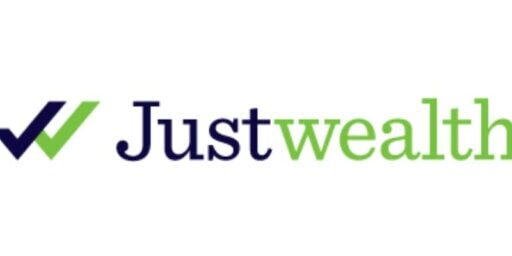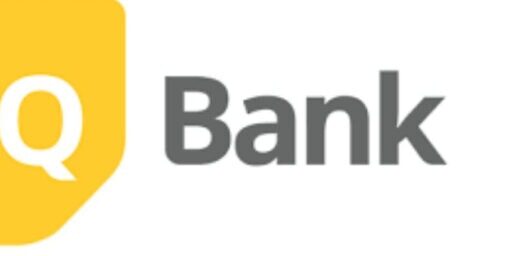Indexed Family Education Fund (RESP) Portfolio Update – 2020 Edition
During this time of uncertainty, many readers have contacted me for continued portfolio updates. One group in particular – parents – are asking me what I’m doing with my RESPs.
What is an RESP? At a high level, an RESP is an investment account for future post-secondary students and stands for Registered Education Savings Plan. It can be set up as an investment account that grows tax-free until the money is withdrawn towards education expenses (and taxed in the student’s hands).
The icing on the cake is that the federal government matches 20% of RESP contributions up to a maximum of $500/child/year. In other words, you’ll max out government matching when you contribute $2,500/year/account.
The RESP portfolios for our children are set up with TD e-Series mutual funds which provide a low-cost way to index the market (some other ways to index your portfolio). We contribute $2,500/account/year to get the maximum contribution from the government of $500/account/year. So basically $5,000 contributed to the two RESP accounts gives us $6,000 annually to invest.
So what are we doing with our RESPs during this time? Are we buying through this market correction and the following bounce?
As evidenced in my last financial freedom update, I have been adding to our investment accounts throughout the first quarter. RESP accounts included. In fact, I have a tendency to hold a portion of cash in my portfolios, and this is likely the lowest percentage of cash in these accounts since inception.
The original plan was to be aggressive for the first 10 years (90% equities 10% bonds) for each child with increasing fixed income as the University tuition nears. I copied the table from my original RESP strategy article below.
I have since adjusted the first 10 years to have close to 75% equities and 25% bonds. I like to keep things simple, and having it set up this way will still provide solid long-term results, while enabling me to keep it simple with 25% in each of Canadian equity, US equity, International equity, and Bonds.
As of today, my oldest child is 12 and my youngest 9. I have increased the bond allocation of my oldest child but staying fairly aggressive with the youngest account. We aren’t quite at 40% bonds for the 12-year-old yet, but getting there. During the March 2020 correction, I actually transferred a bit from bonds to equities and plan to transfer back in the near future.
Index 0-10yrs 10-14yrs 14-17yrs 18yrs + Canadian Equity 30%25%20% 10% 0% US Equity 30%25%20% 10% 0% International Equity 30%25%20% 10% 0% Canadian Bonds 10%25%40% 35% 0% GIC’s 0% 0% 35+% 75% Money Market Fund 0% 0% 0% 25%
First (oldest child) RESP Portfolio (started 2nd quarter 2008)
| Investments | Units Held | Price Per Unit | Market Value | % Holdings | Book Value |
| TD CDN Money Mkt | 109.213 | $10.00 | $1,092.13 | 1.81 | $1,092.13 |
| TD CDN Index-e** | 550.631 | $24.33 | $13,396.85 | 22.190 | $11,977.29 |
| TD US Index-e** | 200.205 | $70.19 | $14,052.39 | 23.280 | $5,895.73 |
| TD CDN Bond Index-e** | 1604.558 | $12.30 | $19,736.06 | 32.690 | $18,583.70 |
| TD Int’l Index-e** | 981.163 | $12.33 | $12,097.74 | 20.040 | $10,465.20 |
| Total as of May 01, 2020 | $60,375.17 | $48,014.05 | |||
Second RESP Portfolio (started 3rd quarter 2011)
| Investments | Units Held | Price Per Unit | Market Value | % Holdings | Book Value |
| TD CDN Money Mkt | 109.25 | $10.00 | $1,090.25 | 2.660 | $1,090.25 |
| TD CDN Index-e** | 425.247 | $24.33 | $10,346.26 | 25.20 | $9,247.20 |
| TD US Index-e** | 151.251 | $70.19 | $10,616.31 | 25.86 | $5,975.24 |
| TD CDN Bond Index-e** | 781.375 | $12.30 | $9,610.91 | 23.41 | $9,060.06 |
| TD Int’l Index-e** | 761.988 | $12.33 | $9,395.31 | 22.880 | $8,372.43 |
| Total as of May 01, 2020 | $41,059.04 | $33,745.18 | |||
The investment return for both portfolios has been fairly close throughout the years. I ran the numbers through Excel’s XIRR function (here’s how to use XIRR to calculate investment returns) from inception to May 1, 2020.
While 2020 has been a correction year so far, the long-term results remain encouraging. For the oldest child, we started the portfolio in early 2008 near the peak of the market so there was a point in early 2009 where the market value of this portfolio was significantly below book value. It’s comforting to see that re-balancing with new money every year has brought positive longer-term results. Since its inception, this portfolio has returned 7.0% annually.
The second RESP portfolio was started near mid-2011, which fortunately was during a small market correction. Since the last update, I managed to bring the % holdings of each of the mutual funds to “near” target amounts by releasing some of the cash that I have a tendency to hoard. New cash this year was deposited directly into each mutual fund, instead of moving money into the money market prior to re-investing into the funds. Since inception, this portfolio has returned 6.50% annually.
So in conclusion, I find that indexing provides a steady, systematic, and low-stress way of investing. With another 5 years until post-secondary education for my oldest child and 8 years for my youngest, the accounts should have enough to cover most of their undergraduate degrees if they decide to move away from home, and perhaps even pay for a post-graduate degree should they stay home.
That’s our RESP update for 2020. Even with a “major” market correction, indexing continues to provide a steady, hands-off, way to invest for long term results. Stay safe out there!
I've Completed My Million Dollar Journey. Let Me Guide You Through Yours!
Sign up below to get a copy of our free eBook: Can I Retire Yet?











I have been told by TD in 2022 that I have to update my Investment Profile every year and ongoing before I am allowed to make any purchases in a new calendar year. I have followed the same set up that FT has described here since 2016 and had only to update my profile once in that time. Anyone else been told this? This needed to be done by Appt in Branch or by phone. It is a couple weeks from today for the earliest appt. I waited on the ph in the background for 2 hours before I was able to get an agent to do this which itself took 25 – 30 minutes
Hi FT,
I’m currently with Questrade for my son’s RESP, and as he’s nearing 15, I’m looking at more capital preservation than growth. Have you started looking at GIC options – with Questrade/elsewhere or are you looking at HISA accounts?
I’m looking at the GIC options with Questrade vs. Wealthsimple Save and the latter seems to have better rates.
What’re your thoughts?
Hello Rajesh! My oldest still has about 6 yrs before starting University, so we are still invested. However, as we get closer to tuition time, I will be looking into GIC/cash options. It would depend on the flexibility that you need, and the rates offered. Perhaps keep the tuition amount that remains relatively fixed (plus inflation) in a GIC, and other cash needs in a HISA? Might be a good idea to start converting to cash/GIC/HISA a few years prior to needing the money. What are your thoughts?
Thanks so much for your RESP insights! I’ve been managing a TD e-series Couch Potato RESP exactly like yours since 2007 when my son was born. He just turned 13, so I’m wondering about asset allocations. He’s just under 30% in bonds, but like you I was looking to reduce the equity exposure further. You said you’d be moving more to bonds soon…are you waiting for the US market to improve to a specific level of the Dow Jones or S&P index before doing so? It’s vastly improved since the March lows, but a correction seems imminent. Thoughts?
I adopted a very similar plan (thanks to your earlier article on RESPs!) where I currently mimic VGRO. Once my kids are over 10, I’ll start to scale back the stock proportion.
I, also, have my funds in a FRESP (family), which allows any of my kids access to the funds. This is to mitigate the risk of 1 child requiring more money than the other for college.
Thanks for the articles on this site!
Excellent results considering the market conditions currently! I like how you even shared details of which quarter you started the RESP. Your kids will have lots of options to choose from for post secondary when they are ready for it. Hope home schooling is going ok for them right now.
Our kids are similar ages and we started the RESP in Q1 2008. First 10 years I just put everything initially into XIU then XIC. Early 2019 moved it all to VGRO. This years $6k went into VCIP a month before corona hit the markets. Portfolio was at $120k, this morning at $113k.
Will make future contributions to VCIP until I start building a GIC ladder when older kid is 14-15 years old. I like you money market idea for some of the money closer to beginning withdrawals.
Very impress results especially since its a passive portfolio with low beta. Congratulations.
Thank you for the update posts on your RESP. I would like to implement your strategy with TD e-Series but I don’t understand purchasing and balancing these e-funds while avoiding the 90-day early redemption fee of transferring and selling units. For example, if I contribute $100 monthly into an e-fund starting in January 2020, would I have to stop contribution for Oct/Nov/Dec to allow 90-days to rebalance the portfolio on January 2021? Or can I continue contribution throughout the year and I have only $900 to rebalance on January 2021, believing that the system automatically sells units from the first 9 months and not the latest 3 months?
Henry, it’s no longer 90 days, it’s now 30 days. Also, it goes by First-In-First-Out, so as long as the oldest units you are trying to move are older than the 30 days you’re OK. Practically this means that unless you’re moving entire amounts from one type of fund to another you’re very unlikely to get the short-term trading penalty.
Hi. This is great article. I am just getting into world of investing for simple reason to start saving for kids university. I have 4 kids and no resp or any investment
Would love some guidance
Oldest 13 years
Then 12 years
Then 10 years
Then 7 years
Im in Canada. Lets say i can start with 10k. What do you suggest
Check out our “all in one ETFs” article Zuber!